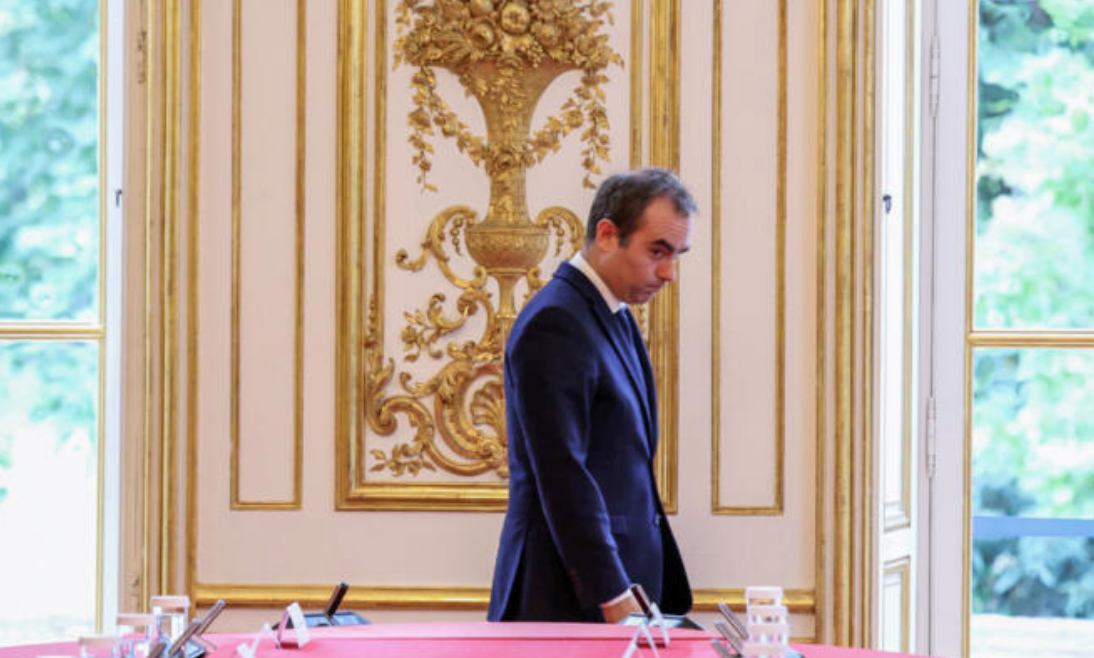If Napoleon came to power twice, then Sebastian Lecornu’s second government might be just a simple desire of Macron, following the old good French tradition of holding the power in the hands of the right circles.
In just a few weeks after Lecornu made an epic “hasta la vista” comeback, France erupted in discontent.
With X posts fiercely reflecting public frustration and claiming that the country was losing its common political sense, the main social complaint centered on France slowly moving from a period of relative economic stagnation to the edge of default.
Its main economic flashpoint to allure France toward a new revolution, or at least a wave of protest, was the old familiar trick of the government, on pension reform.
To make people work longer, only to be eventually ripped off by atrociously high taxes, apparently took its roots from Marie Antoinette’s understanding of how to live a life.
But it’s not just about the cakes or bread choice when counting on the budget and those who are the most dependent on it.
With the socialist government successfully implementing the pension, dropping the retirement age from 65 to 60 in 1982 and giving people a chance not only to live to work but to work to live, the current Lecornu arguable proposal looks closer to the French pre-revolutionary past, when working more was just an option for the king and his circle to have more than enough.
While the overall pension-related tax wedge on labour income has been fairly steady, with small ups and downs averaging about 0.17% per year for 2023–2025, and with a slight 0.3% increase for an average single worker from 2023 to 2024, rising from 46.9% to 47.2%, the system showed little stability.
Yet the promiscuous decision to raise the retirement age, intended to fill the missing budget, puts added pressure on the aging workforce with 1.4 to 1.5 workers per retiree.
Compared to the 1980 statistics, this can be seen as a drastic economic and social change, leaving us on the edge of dreaming about returning to the desirable 2.1 workers per retiree, once a hallmark of effective socialist reforms.
Growing demographic imbalance, trapped in the closed loop of the cost of living crisis and directly impacting the pension rate stagnation at €1,400–€1,600 on average, pushes the French government into a money-haste chase for a solution, faster than the Louvre robbers.
The government’s heavy reliance on the current working force is best described as a pay-as-you-go system, where workers’ contributions form the money pot used to pay the pensions of the retired ones.
While employment rates remain low, the aging population increasingly strains the young, already paying a significant share of taxes, and unemployment continues to rise, the rate has no choice but to face decline.
Neither significantly progressing nor dreadfully declining, Macron’s government, however, due to Lecornu’s proposed pension reform, the first in eight years for the centrist, economically liberal party remains, as Reuters reports, with modest domestic achievements.
Remarkably, France spends 14 % of GDP on its pension system, with the average French worker contributing 15–17 % of their income, while the employer adds an “extra” 8 %, bringing the total contribution to a significant 25–27 % of the pension scheme.
And although, according to the official GDP data, the average French pensioner receives a pension roughly equal to their full monthly earnings, France remains at the top of the low-retirement-standard scale.
Crucially, it boasts the third-highest pension spending as a percentage of GDP, with the Pension Olympus mountain, putting Italy at the summit, Greece on the second step, France on the third and the UK and the US trailing on the lower tiers.
As much as Lecornu’s reform was presented by Macron as a compromise to previous unsuccessful pension reforms, it demonstrated the president’s determination not only to prevent government destabilization but also to steadily maintain his personal standing.
The effect turned out to be the opposite.
The government became even more destabilized, with the leftists emerging as the catalyst within Macron’s party urging to dismiss Lecornu from his position.
Reaching its tipping point, factional conflict within Macron’s party fully pressured Lecornu, giving him a bid farewell and ultimately urging him to “hit the road” and never come back.
This forced him to suspend the reform, yet tensions remained, leaving France on the edge of the precarious brink of an uncertain future default, with low pension contributions but disproportionately high spending.
Pulling the strings of the pension scheme has been Macron’s favorite tactic throughout his eight years of ruling the country, but stagnation has now become an acute problem, an alarm raised by a single drastic attempt to change the old system.
Redistribution may work in the short term, but when demographics are unfavourable and the broader economy is weighed down by a cost-of-living crisis affecting not only France but Europe as a whole, attempts to reform the system itself tend to falter.
Moreover, the structure of the system remains inherently unfair: the self-employed and business owners, who contribute more, ultimately receive greater returns and additional benefits, while the average employee is left with no comparable advantages and little to live on.
Consequently, the crisis itself drew public attention, posing the central question on what has the government actually achieved, beyond merely keeping the existing system afloat.
Lecornu is not to be the one to hold the responsibility solely for implementing the party’s long-standing sharp tactics, or for highlighting them at an inopportune moment.
But when parliamentary outrage erupts, the president remains neutral and the five-year credit default swap spreads hit 48 basis point, a five-month high, budget cuts edge ever closer to the outcome of a “money heist”.





















